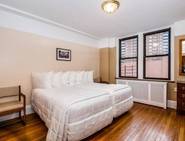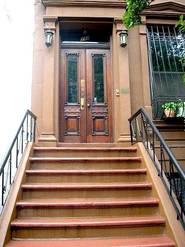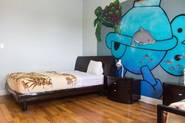New York is perhaps the best connected city in the United States. With a subway that zigs and zags under the city and all its boroughs, an extensive bus system, and its easy-to-navigate streets on a grid, travelers and New Yorkers alike have little need for cars, unless they are the omnipresent yellow taxis that have become a symbol of the city.
Getting Around New York

MetroCards!
Your first order of business is to purchase a MetroCard, your ticket to ride the city's bus and subway transportation system. You can buy a MetroCard at a vending machine or a station booth.
A single subway or local bus ride costs $2.25 for any distance, while express bus rides cost $5.50. Pay-per-ride MetroCards can be purchased in any amount between $4.50 and $80. Every $10 spent on a MetroCard produces a 7 percent bonus. So a $10 MetroCard purchase will give you a card worth $10.70. An $80 MetroCard purchase will give you a $5.60 credit.
If you’re in the city for a longer trip, an unlimited MetroCard can be a much better deal. An adult 7-Day Unlimited Ride MetroCard, a particularly fantastic deal, costs $29. It’s good for unlimited travel on subway rides, and local bus rides until midnight, for seven days from the first use. An adult 30-Day Unlimited Ride MetroCard costs $104.
In order to prevent Unlimited Ride MetroCards from being used by more than one rider, said MetroCards cannot be used at the same subway station or on the same bus route for 18 minutes after validation. While this regulation may seem unimportant, it often bugs fast-moving New York residents who pop out of the subway for this or that errand and then find their reentry temporarily blocked.
In addition to being used on New York City subway lines, express buses, and local buses, MetroCards can be used on Long Island Bus lines, the Staten Island Railway, the PATH commuter train, the JFK Air Train and most New York City private bus lines (note that unlimited passes aren't accepted on the PATH train and JFK Air Train).
For more information visit the official site of New York's Metropolitan Transportation Authority (MTA). It’s also advisable to keep an eye on the MetroCard City feed, where you can find a current list of museums and attractions offering discounts and promotions when you show your MetroCard.
Subways
New York subways are an essential part of life for millions of people. Trains run all night long (albeit on a reduced schedule at night and in the very early morning). 24 subway lines stretch across Manhattan, Brooklyn, Queens and the Bronx. The subway costs $2.25 per ride.
Subways to and from Brooklyn, the Bronx and Queens often operate with limited schedules on weekends.
A $2.25 subway fare can be used for one subway-to-bus or bus-to-bus transfer within 2 hours of paying your fare.
See a map of the New York City subway system.
Bus
The New York bus network adds crosstown versatility to the subway's mostly north-south coverage. Bus fares are identical to subway fares at $2.25 per ride. Exact change in coin form can also be used to pay for a bus journey.
A $2.25 bus fare can be used for one bus-to-subway or bus-to-bus transfer within 2 hours of paying your fare.
Find a full list of New York City bus route maps here.
Taxi
Taxis, while pricey, are on occasion the most convenient transportation option, particularly late at night. For short distances at rush hour, however, taxis aren't a great option. The New York City taxi entry charge, or flag drop, is $2.50. Each additional unit runs $.40. A unit designates every one-fifth of a mile traveled at 6 miles (or faster) per hour or every 60 seconds when taxis are idling or traveling slower than 6 miles per hour.
There is a peak weekday surcharge of $1 on Mondays through Fridays between 4 p.m. and 8 p.m. and a night surcharge of $.50 between 8 p.m. and 6 a.m. Any tunnel or bridge tolls are also added to your cab fare. Check out the Taxicab Rider Bill of Rights for more information.
Before you think about nabbing a taxi to get between the airport and Manhattan, check out our Getting Into New York guide.
Foot
New York is a walking city. In addition to exploring parks and paths throughout the city, New Yorkers walk to work, and run errands and meet friends on foot. Population density and traffic congestion together help explain why many native New Yorkers never learn to drive cars, as well as why many transplants to New York allow their driver licenses to lapse. You might as well join the natives in their mad walking habits. Pack some good walking shoes!
A Getting Around Tip
Numerical avenue addresses in New York tell you very little. Always be sure to obtain the nearest cross-street of any Manhattan destination.
Related posts from our blog













